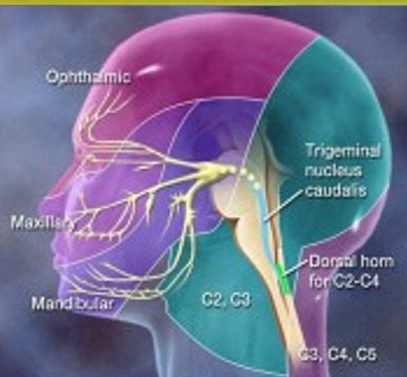Trigeminal neuralgia and TMD
The temporomandibular joint (TMJ) and the trigeminal nerves are some of the most important structures of your face. With that being said, when pain is experienced it can take a toll on your everyday life. However, what is the difference between temporomandibular joint disorder and trigeminal neuralgia?
When the TMJ is out of alignment or compromised in other ways, it can affect many other areas of the head and neck. Since the trigeminal nerve innervates with the TMJ it can also innervate so much of the face and neck. As a result, pain all over the head and face can result when there is any sort of disorder present in this structure.
What is Trigeminal Neuralgia?
Trigeminal Neuralgia is a chronic neuropathic pain disorder that presents with stabbing or electric-shock-like pain in the face. Studies have shown that this is a rare disorder that affects 3 to 5 new cases per 100,000 people per year. It is a dysfunction of the trigeminal nerve that results in extreme and often progressive pain. Similar to the TMJ, the trigeminal nerve may result in jaw pain, face pain, headaches and more. However, it appears to be more serious.
Often characterized by many different types of pain, people suffering from trigeminal neuralgia might experience:
- Occasional mild pain
- Occasional sharp, stabbing pain that can be triggered by
- Touching the face
- Chewing
- Speaking
- Brushing teeth
- A light breeze on the face
- Pain in the jaw, teeth, gums, lips, cheek, eye or forehead
- Pain may affect only one side of the face
- May be distributed across a large area or focused in a tiny spot
Typically, trigeminal neuralgia attacks tend to begin as mild pain, but become more frequent and severe over time.
TMD vs. Trigeminal Neuralgia
So, how can you tell the difference? These two conditions can be easily confused because TMD may also involve irritation of the trigeminal nerve. However, the main way you can tell the two conditions apart is that trigeminal neuralgia consists of the pain only and does not have any of the other symptoms that TMD sufferers have, including:
- Irregular motion
- Popping
- Grinding the jaw joint
- Ringing in the ears
The pain of trigeminal neuralgia is also more limited, but more intense. It is referred to as sharp, electric pain of nerve disruption and does not include the duller ache of muscle soreness or jaw dysfunction like TMD does. Pain is often limited to the area the trigeminal nerve serves and won’t affect other areas, such as the neck or upper back.
In order to get an accurate diagnosis of trigeminal neuralgia it is important to get testing done with an MRI in order to look for telltale signs of damage or pressure due to abrasion, irregular blood vessels, tumors or degradation of the nerve itself. Additionally, it is important to visit a dentist that specializes in TMD or trigeminal neuralgia care.
Schedule your TMD evaluation by contacting Dr. Gary Demerjian. With a proper consultation you can take the next steps toward relief from your pain.


No responses yet